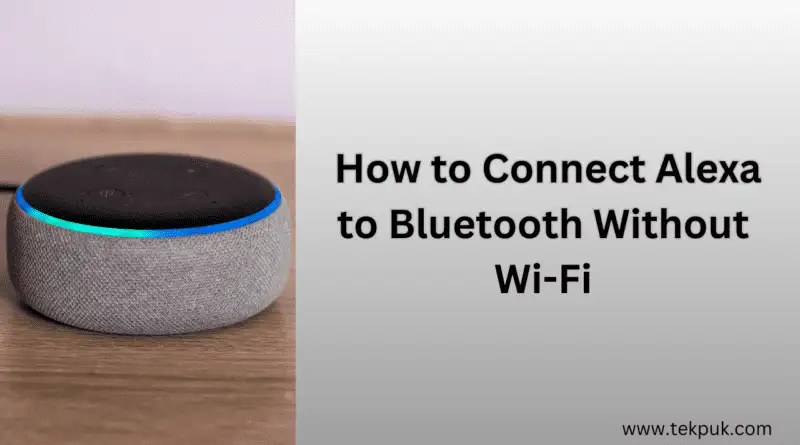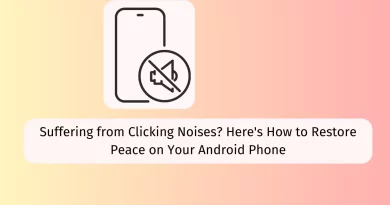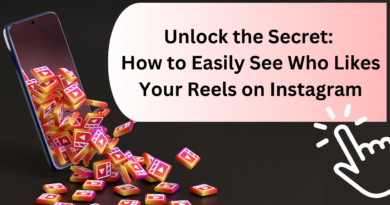Unlocking the Secrets: How to Connect Alexa to Bluetooth Without Wi-Fi
In today’s smart home era, voice-controlled devices have become increasingly popular. Among them, Amazon Alexa stands out as one of the most widely used virtual assistants. Alexa enables users to perform various tasks through voice commands, making life more convenient and enjoyable. While Alexa typically relies on Wi-Fi connectivity, there are situations where you may want to connect it to Bluetooth without Wi-Fi. This article will guide you through the process of connecting Alexa to Bluetooth without relying on a Wi-Fi network.
What is Alexa?
Alexa is Amazon’s virtual assistant designed to perform various tasks through voice commands. With an ever-expanding range of skills and integrations, Alexa can play music, answer questions, control smart home devices, provide weather updates, and much more. It has become an essential part of many households, offering convenience and efficiency.
Understanding Alexa’s Bluetooth Capability
Alexa is equipped with built-in Bluetooth technology, allowing it to connect to compatible devices wirelessly. With Bluetooth connectivity, you can use Alexa to stream audio from your smartphone, tablet, or any other Bluetooth-enabled device. This feature enables you to enjoy music, audiobooks, podcasts, and other audio content through your Alexa device.
Benefits of Connecting Alexa to Bluetooth without Wi-Fi
Connecting Alexa to Bluetooth without Wi-Fi offers several advantages. Here are a few benefits of utilizing Bluetooth connectivity with Alexa:
Portability: By connecting Alexa to Bluetooth devices, you can enjoy its functionalities without relying on a stable Wi-Fi connection. This makes Alexa more versatile and convenient to use in various settings, such as outdoor gatherings or while traveling.
Expanded Audio Options: Bluetooth connectivity allows you to stream audio from different sources. You can play music or other audio content from your smartphone, tablet, or other Bluetooth-enabled devices directly through your Alexa device.
Flexibility: With Alexa connected to Bluetooth, you can easily switch between different devices without reconfiguring Wi-Fi settings. This provides a seamless experience and makes it effortless to connect and control various audio sources.
Read also : 10 Ways to Fix Android Cannot Connect to Wifi But Says Saved
Step-by-Step Guide: How to Connect Alexa to Bluetooth Without Wi-Fi
Follow these steps to connect your Alexa device to Bluetooth without Wi-Fi:
4.1. Check Alexa’s Bluetooth Compatibility
Before proceeding, ensure that your Alexa device supports Bluetooth connectivity. Most Alexa-enabled devices have this capability, but it’s always good to double-check the specifications of your specific model.
4.2. Activate Alexa’s Bluetooth Pairing Mode
To activate the Bluetooth pairing mode on your Alexa device, follow these steps:
To begin, please ensure that your Alexa device is turned on and positioned within its operational range.
To get started, open the Alexa application on your smartphone or tablet.
Next, navigate to the bottom of the screen and tap on the “Devices” tab.
Select your Alexa device from the list.
Tap on the “Bluetooth Devices” option.
Enable the “Pairing Mode” or “Enable Pairing” option.
4.3. Put Your Bluetooth Device in Pairing Mode
Now, put the Bluetooth device you want to connect to Alexa into pairing mode. The specific process may vary depending on the device, but generally, you can find the pairing instructions in the device’s user manual.
4.4. Connect Alexa to the Bluetooth Device
Once your Bluetooth device is in pairing mode, follow these steps to connect it to Alexa:
Within the Alexa app, locate and tap on the “Pair a New Device” option.
.Alexa will scan for available Bluetooth devices nearby.
Choose your preferred Bluetooth device from the provided list of options.
.Proceed by following any additional prompts or instructions that appear to finalize the pairing process.
4.5. Test the Connection
After successfully pairing the Bluetooth device, test the connection by playing audio through Alexa. Use voice commands to ask Alexa to play music, and it should play through the connected Bluetooth device.
Troubleshooting Tips for Connection Issues
- If you encounter any difficulties while establishing the connection, here are some troubleshooting tips to assist you:
- Ensure that your Alexa device and Bluetooth device are in close proximity.
- Verify that your Bluetooth device is compatible with Alexa.
- Restart both your Alexa device and the Bluetooth device.
- Disable and re-enable Bluetooth on your Alexa device.
- Reset your Bluetooth device to factory settings if necessary.
- Update the firmware or software on both devices if updates are available.
Read also : How to see Liked Reels on Instagram
Enhancing Your Alexa Experience with Bluetooth
- Connecting Alexa to Bluetooth opens up a world of possibilities. Here are a few ideas to enhance your Alexa experience:
- Multi-Room Audio: Use Alexa and Bluetooth to create a multi-room audio system, allowing synchronized playback across multiple speakers or devices.
- Smart Home Integration: Connect Bluetooth-enabled smart home devices, such as smart speakers or soundbars, to Alexa for seamless control and enhanced audio quality.
- Hands-Free Calling: Make hands-free phone calls by connecting your smartphone to Alexa via Bluetooth. Use voice commands to dial numbers or ask Alexa to call specific contacts.
Exploring the Feasibility of Alexa’s Functionality Without Power
Have you ever wondered if Alexa can function without a power source? This intriguing question piques our curiosity about the capabilities of this innovative device. Let’s dive into this topic and explore the potential scenarios where Alexa could operate without relying on external power.
At first glance, it might seem implausible for Alexa to work without a power supply. After all, like most electronic devices, Alexa typically requires a constant source of energy to function optimally. However, advancements in technology constantly surprise us, pushing the boundaries of what we thought was possible.
Imagine a scenario where Alexa could harness and store energy from alternative sources. Picture a future where Alexa is equipped with advanced solar panels or kinetic energy converters, enabling it to sustain its operations independently. In this futuristic vision, Alexa’s functionality would extend far beyond its current capabilities, offering a seamless user experience even in remote or power-challenged environments.
Another intriguing possibility is the development of innovative power storage solutions. What if Alexa could store energy efficiently, much like a rechargeable battery? With such advancements, Alexa could be charged while connected to a power source and then operate cordlessly for a significant duration. This opens up a world of possibilities, allowing Alexa to be used in various settings without the need for a constant power connection.
Furthermore, the concept of wireless charging has gained substantial attention in recent years. Imagine a scenario where Alexa could wirelessly charge itself using cutting-edge technology embedded in its surroundings. This would eliminate the need for physical cables and enable Alexa to operate autonomously within its defined range.
While these possibilities may sound like scenes from a science fiction movie, technological progress has a way of turning imagination into reality. As we continue to witness remarkable advancements in the field of artificial intelligence and smart devices, it wouldn’t be far-fetched to envision a future where Alexa can indeed work without relying solely on external power sources.
In conclusion, although the current iteration of Alexa relies on a power supply for its functionality, the realm of possibilities for its future capabilities is vast. With advancements in energy harvesting, power storage, and wireless charging technologies, we can expect Alexa to become increasingly self-sufficient and adaptable to various environments. The day when Alexa operates without power may not be too far away, ushering in a new era of intelligent and independent voice assistants
Conclusion
In conclusion, connecting Alexa to Bluetooth without Wi-Fi provides greater flexibility and expands the audio options available to you. Following the step-by-step guide outlined in this article, you can easily connect your Alexa device to Bluetooth and enjoy the convenience of wireless audio streaming. Remember to check compatibility, activate Bluetooth pairing mode, and follow the necessary steps to establish a connection. With Alexa and Bluetooth, you can unlock a more versatile and enjoyable smart home experience.
FAQs
Q1: Is it possible to connect more than one Bluetooth device to Alexa?
Yes, Alexa supports connecting multiple Bluetooth devices. However, only one device can be actively used at a time.
Q2: Can I connect Alexa to Bluetooth speakers?
Absolutely! Alexa can be connected to Bluetooth speakers, soundbars, headphones, and other audio devices with Bluetooth capability.
Q3: Can I connect Alexa to Bluetooth headphones?
Yes, you can connect Bluetooth headphones to Alexa for a more personalized and private listening experience.
Q4: Can I connect my smartphone to Alexa via Bluetooth?
Yes, you can pair your smartphone with Alexa using Bluetooth. This allows you to stream audio from your phone through Alexa.
Q5: Can I control Bluetooth-connected devices with Alexa?
No, Alexa’s control is limited to devices that are directly compatible or integrated with its ecosystem. Bluetooth-connected devices are primarily used for audio streaming.




